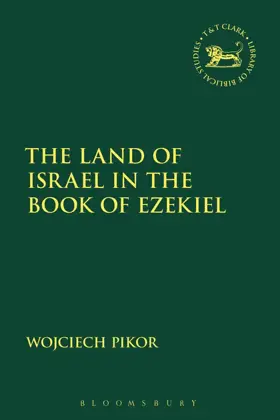

The Land of Israel in the Book of Ezekiel
in Library of Hebrew Bible/Old Testament Studies
Pages
288
Publisher
T&T Clark
Published
5/31/2018
ISBN-13
9780567678843
Pikor anaylzes the land of Israel in the book of Ezekiel showing how its preoccupation with the Babylonian exile and the loss of the Promised Land that this entails is directly linked to the danger this poses to Israel's covenant with God. Pikor examines the motif of land in its literary and historical contexts and in relation to the oracles of salvation in chapters 34-39 as well as the vision of the new Israel and the return of Yahweh's Glory to the temple.
Pikor begins by examining the motif of land in its literary and historical contexts. The main body of the book then addresses specific sections of Ezekiel. Chapter two analyzes the oracles of punishment addressed to Israel, in which the land undergoes a process of anthropomorphization. Chapter three situates the punishment experienced by Ezekiel and his listeners in a broader historical context suggested by the prophet in Ezekiel 20. Chapter four analyses the oracles of salvation in Ezekiel 34–39, in which the restoration of the land of Israel remains intertwined with the promise of the new covenant. Finally, chapter five addresses the closing vision of the new Israel (Ezekiel 40–48), which is characterized by the territorial dimension of the future restoration. This feature is shown via analysis of the rhetoric of the land, the crucial element of which is the return of Yahweh's Glory to the temple. God's presence adds sacral value to the land in which his covenant with his people is to be realized. The covenant will be finalized through Israel's repopulation of the renewed land.
Pikor begins by examining the motif of land in its literary and historical contexts. The main body of the book then addresses specific sections of Ezekiel. Chapter two analyzes the oracles of punishment addressed to Israel, in which the land undergoes a process of anthropomorphization. Chapter three situates the punishment experienced by Ezekiel and his listeners in a broader historical context suggested by the prophet in Ezekiel 20. Chapter four analyses the oracles of salvation in Ezekiel 34–39, in which the restoration of the land of Israel remains intertwined with the promise of the new covenant. Finally, chapter five addresses the closing vision of the new Israel (Ezekiel 40–48), which is characterized by the territorial dimension of the future restoration. This feature is shown via analysis of the rhetoric of the land, the crucial element of which is the return of Yahweh's Glory to the temple. God's presence adds sacral value to the land in which his covenant with his people is to be realized. The covenant will be finalized through Israel's repopulation of the renewed land.
- Table of contents
- Preface
- Acknowledgements
- Abbreviations
- Introduction
- 1. The Context of the Motif of the Land in the Book of Ezekiel
- 2. The Phenomenology of the Land of Israel
- 3. The History of Israel as the History of the Land
- 4. The Land of the New Covenant
- 5. The Vision of the New Land of Israel in Ezekiel 40–48
- Conclusion
- Bibliography
- Index